I admit to several things. Firstly, serious curiosity about the shooting experience of a tiny waist-level device (the RX0 Mark II has a flip screen). Secondly, the desire of every photographer to have hardware that’s small and of good quality. Finally, the usual healthy scepticism about the cost-to-value equation of such a device given Sony’s track record for a) price inflation and b) extremely short lifecycles. At $700, this is both the most expensive camera by volume I’ve ever bought, and one with one of the narrowest shooting envelopes (though not that far off the original APSC Ricoh GR, actually). So: why?
For those unfamiliar, the RX0II is notionally a video-centric action camera “plus”; it’s the size of a GoPro but a bit thicker, and unlike a GoPro, is very solid and all-metal, has a 1” sensor behind a 24mm f4-equivalent Zeiss T*-branded lens. It’s waterproof to 10m, drop proof from 2m and will withstand 2000N forces. It records 4K30P at 100mbps or 1080P120 internally, and supports external recording devices. The sensor is the same as the RX100VII, though the portion in use is a bit smaller and results in 15MP stills, with up to 16fps shooting and RAW support. There’s also multi-frame NR for JPEG. It records to MicroSD and has a Micro USB port for charging (despite the price, there’s no external charger included) and data transfer, a Micro HDMI port and external mic in. Once this cover is removed, the camera is no longer waterproof.
On top of all of this, it has virtually every single menu option from an A7RIV, which means a huge degree of customizability, but also a huge degree of frustration given there are only six buttons on the back of the camera with which to navigate it. I think there are essentially only three ways to use the camera:
- As a video/action cam setup, in which case you’ll set it up once and just use the power and recording buttons, and perhaps the exposure settings. I haven’t yet used it for video – no need, and that’s not why I bought it – but it will certainly need a gimbal or tripod as there’s no stabilization. I’m also not going to comment on its video capabilities as there are others far more experienced than I who have already done so.
- As a stills camera for run and gun documentary. In this case, you leave it in program mode, maybe with spot metering, maybe matrix, and turn face detection on. Face detection (and eye detection) works very well, and can be run at the same time as center point AF with the camera defaulting to faces if it finds them (this is good). Add auto ISO and shutter speed threshold to taste. Note: said shutter speed threshold needs to be higher than you’d expect because the camera doesn’t exactly have a lot of mass damping or anything much to brace against.
- As a stills camera for, well, still things that don’t move – not ideal use, but often there are static scenes that are of visual interest when shooting #2. Here’s the nice thing: you don’t need to change the setup, except perhaps running matrix instead of spot metering for more exposure stability. Also, the tilting screen can be used as an angled kickstand of sorts.
So actually, all of that customization is mostly moot after you’re done setting up. Thank god, since the menus are the usual labyrinthine mess of features you’ll probably never use. The RX0II has two other things I find invaluable, especially on a camera with a really tiny screen: exposure zebras, since a meaningful histogram would obscure a lot of the image, and the ability to zoom to 100% at the focus point in playback with a single button press. Another problem with small screens: you can’t really tell if what you shot was in focus or not until afterwards.
On the subject of focusing: no, it doesn’t have continuous AF. Though there’s supposedly some form of tracking, it appears as though there’s just an algorithm that tracks the position of the selected subject within the frame, but actual movement of the lens elements and focusing itself only happens when the shutter is half pressed. But, it’s fast enough, it seems to do a good job not getting confused with the background, it finds faces and eyes well, and whilst you can move the focus point around – it’s much easier to half press and recompose.
The shutter button itself could use some work, though: the half press is very soft and requires little force, but the full press has a distinct detent and click, which isn’t good when you’re trying to be as stable as possible. It’s even more annoying when the only way to return to the live view screen is by half pressing in some modes, and half pressing sometimes confirms a setting, sometimes escapes the setting menu without confirming – there is no consistency here.
There are however two customizable buttons in the home menu, a ‘my menu’ tab in the main menu (but just one of no fewer than 30 tabs) and a quick function menu accessible from the shooting screen with 12 subitems. I’ve left this as default, but taken to assigning the lower shortcut button to exposure compensation, since the same two left-right keys are also used to adjust that; and the right shortcut button to AF area – though I might change this at some point to metering mode instead, to toggle between spot and matrix.
Despite the paucity of controls, so long as you aren’t adjusting exposure (curiously, long exposures are limited to 1/4s – I suppose Sony had to leave something to fix in mark III) or focus point with each image, it’s actually not too bad, and in a way, the lack of buttons really forces you to think carefully and get your initial camera setup right. The only thing I haven’t figured out how to do quickly is delete single images – on Sony’s other cameras there’s a button for this, but when you go into a menu it requires you to mark images then toggle through several confirmations.
Assuming it’s set up right, what’s it actually like to work with? Firstly, I suspect the RX0 is a more pocketable shape as there’s one dimension that’s distinctly thinner than the other (depth vs height; the mark II is almost square). You need to be careful not to leave a nice fingerprint on the front cover glass (not lens; the cover glass is interchangeable with filters) when you pull it out of your pocket. I also suspect that it’s not usable without the tilt screen seeing as there’s not a lot of camera to grip, and it’s not very heavy so not that stable, either. But with the screen flipped up, you can cup it at stomach height with both hands and gently squeeze the shutter with your thumb; it’s both fairly stable and fairly inconspicuous. The monitor is tiny, but still remains visible in daylight. And you can position the whole camera in spaces that anything larger (basically: anything else) won’t fit, allowing for some rather unique perspectives.
Whilst the waist level way of working is very familiar to me, having spent much time with a Hasselblad V series, the latter requires more extension of imagination – it’s not so much a question of where you can put it as what might be interesting as there’s never been a camera put there before? To be honest, I’m still working on this. I’m also trying to figure out how to pick a focus point and lock it if you can’t position yourself behind the camera when setting up; with the screen flipped up, your hand blocks the lens. And then you also either need to rely on the wireless app (fiddly, battery draining) or the intervalometer (thankfully, it has one). More experimentation is definitely required.
Speaking of battery drain: the RX0 (both versions) uses a tiny 700mAh battery that’s specific to this camera. It lasts for about 400-500 shots the way I use it, or 1.5h continuous monitor-on time if you’re in stills mode. I suspect it will be dead very quickly if recording 4K video. Unfortunately – you can only charge it in-camera, or if you buy a separate charger. This is just corporate stinginess at the price of the camera. The good news is that it can operate on external power (think USB power bank) and charge at the same time, so a spare battery isn’t actually strictly necessary. I got through a morning of dedicated shooting with it with plenty of power left, switching it on and off between shots – there’s very little time penalty for doing so. However, there’s a catch – the camera self-drains with power off, even in airplane mode. It seems this Sony ‘feature’ still persists (I suffered from the same issue with my A7R2 etc.)
What about image quality? Well, it’s the same 20MP 1” sensor that can trace its origin to the original RX100 back in 2013 or so; now BSI-capable and with a global electronic shutter. Though there are the usual bragging-right stratospheric sensitivities, the reality is that as with all sensors of this type, it performs very well at base ISO (125), being pretty indistinguishable from M4/3 up to about ISO 800 or so. At this point you see noise starting to make itself felt in the form of diminishing dynamic range, and at 1600 and up, noise is prevalent. At 3200 and tungsten lighting, it’s everywhere and pretty much game over. Lower ISOs offer perhaps 12 stops of usable dynamic range; just on the right side of enough. Though there are plenty of JPEG processing options, unfortunately you still need to shoot RAW with the camera as color isn’t very accurate (yet surprisingly it has s-Log profiles for video work that can also be applied to stills).
The lens itself has a fixed f4 aperture, and fortunately seems quite sharp and consistent across the frame. Working from waist level seems to magnify any of this kind of distortion, since the camera is at a height that tends to encourage straight verticals. Fortunately, though there is some projection distortion (you see this in JPEG vs RAW files since the former has built in geometric correction) lines near the edge of the frame remain relatively straight; the distortion seems to be contained near the center of the frame.
Actually, I think the biggest limitation of the RX0II is not its size, physical controls, sensor, or menu; it’s its shooting envelope. Relative limits for a usable handheld picture of acceptable quality stack up as follows, taking into account things like stability/ weight/ finder bracing/ OIS/ focal length/ image processing engine etc.:
iPhone XS Max – 28mm-e, f1.8, ISO 200, 1/6s
Nikon D3500 and 18-55 kit – 28mm-e, f3.5, ISO 3200, 1/6s (+6 stops over iPhone)
Nikon Z7 and 24-70 kit – 28mm-e, f4, ISO 6400, 1/3s (+2 stops over D3500 as above, and +8 stops over iPhone)
Nikon Z6 and 28/1.4 – 28mm-e, f1.4, ISO 25600, 1/3s (+5 stops over Z7 as above; +7 stops over D3500 as above +15 stops!! over iPhone)
Sony RX0 II – 24mm-e, f4, ISO1600, 1/30s – hang on, the envelope appears to be no better off than the iPhone.
Whilst this comparison looks at the absolute limits of the handheld envelope, it doesn’t consider moving subjects where shutter speed limits are determined by subject motion, or peak image quality at lower ISOs (where we tend to spend most of our time anyway). Medium format cameras look poor because of the slowness of lenses and recoil of large shutters, but we know that at base ISO, there’s a significant difference in image quality. The same holds true here, and I’ve found that if you use the RX0II within its limitations – it’s actually pretty darn impressive, and the form factor means that you can get images you wouldn’t otherwise have been able to, either through position, stealth, or by virtue of being small enough to bring just in case.
I think the big question for a photographer is whether this potential justifies the price. Image quality is a significant step up on the other 1” camera I have here (an older Panasonic TZ-series), but the RX0II costs more than my D3500 and its two lenses. (The D3500 of course leaves it in the dust for image quality). If you need the video functions and size, I think you could make enough of a case to acquire one. If you’re a narcissist and primarily shoot selfies, I think you definitely need one. But as a stills shooter only…well, you’d better have deep pockets or a very clear idea of what you’re going to use it for.

Robin on the U20, shot with the RX0II: This is a actually a camera?!
I admit that since seeing the original RX0, I’d been bitten by a degree of serious nostalgia only possible if your first digital camera was a Sony U20 (or one of the other U-series cameras); a tiny metal-clad thing in an innovative form factor with pleasant tactility that did the bare minimum and did it pretty well (for its time). It might have taken minimalism a bit too far, though – there’s no exposure compensation or means to select the focus point. My U20 still works, but IQ has degraded even further due to some coating separation on the lens and what seems to be an intermittent sensor glitch. I’m sure there’s was some inspiration from the Minox subminature cameras though; I confess to having a bit of a fetish for these too, being incredibly precise and entirely mechanical objects with more than passing engineering shared with watchmaking.
I suppose the RX0 is a modern take on this, though like modern cars, we’ve gone 100% electronic and lost most of the tactility in the process. It’s probably not a bad thing as the camera has enough object-quality to still be something very pleasant to manipulate and shoot with, and there’s no denying that the amount of technology packed inside that frame is worthy of praise. The RX0II effectively contains the sensor and processor from an RX100VII, together with everything else required to make a fully functioning camera, in the volume of your average DSLR battery. In this case, I’m willing to forgive Sony’s menu- and spec-sheet obsession because I can ignore most of it in practical use, and simply concentrate on figuring out exactly what new kinds of images I can make with this camera – and as photographers, we need to celebrate tools that open new creative possibilities to us. MT
The Sony RX0 Mark II is available here from B&H and Amazon.
__________________
Prints from this series are available on request here
__________________
Visit the Teaching Store to up your photographic game – including workshop videos, and the individual Email School of Photography. You can also support the site by purchasing from B&H and Amazon – thanks!
We are also on Facebook and there is a curated reader Flickr pool.
Images and content copyright Ming Thein | mingthein.com 2012 onwards unless otherwise stated. All rights reserved
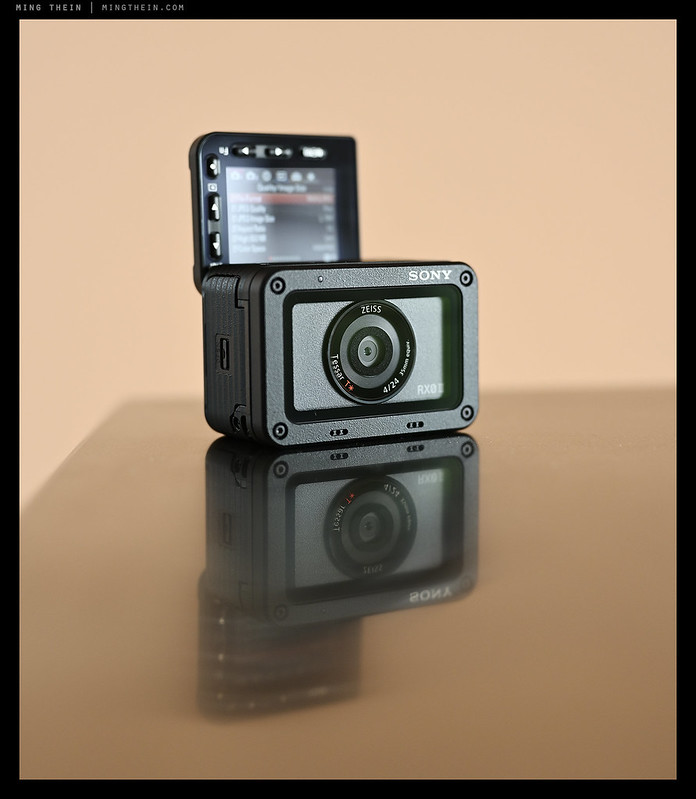
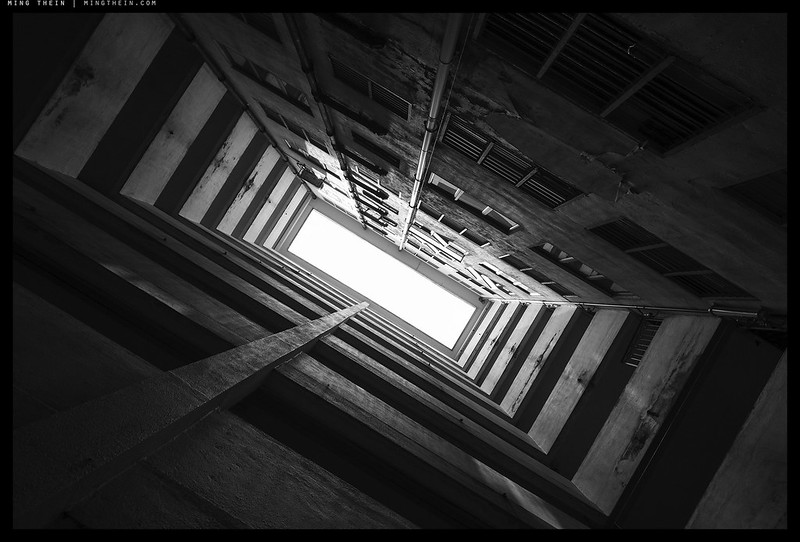
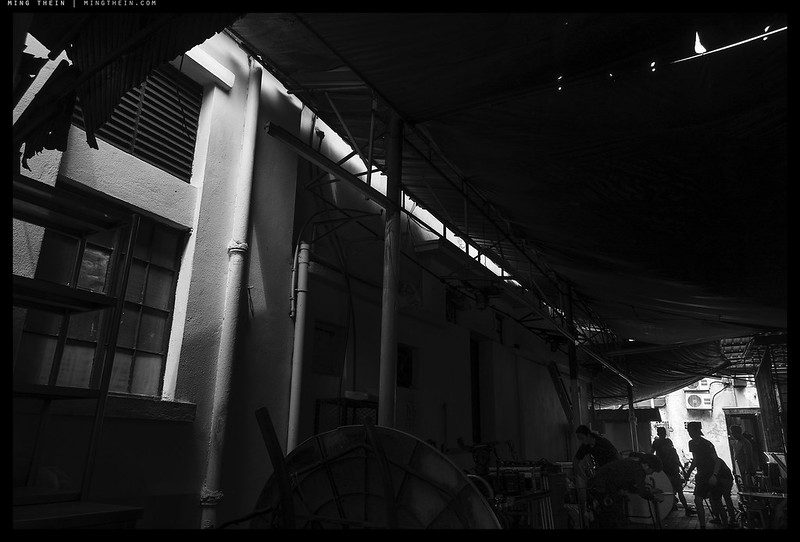
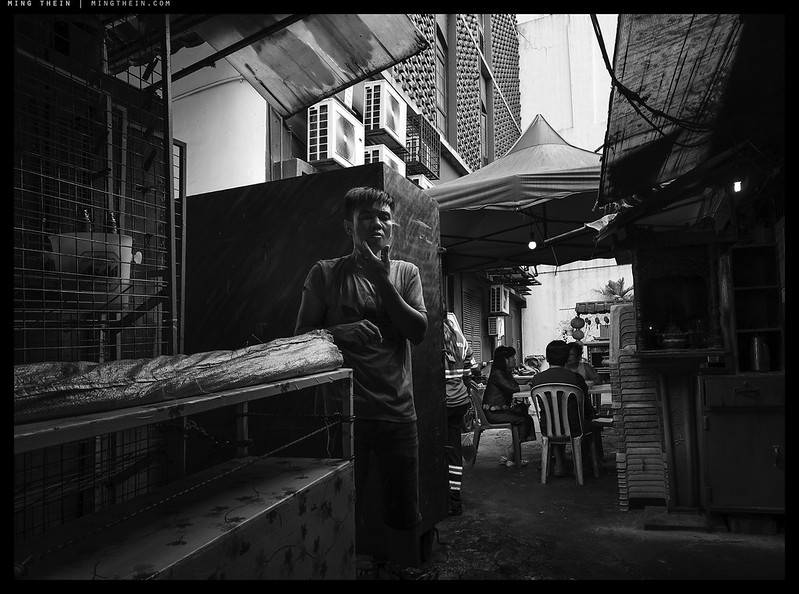
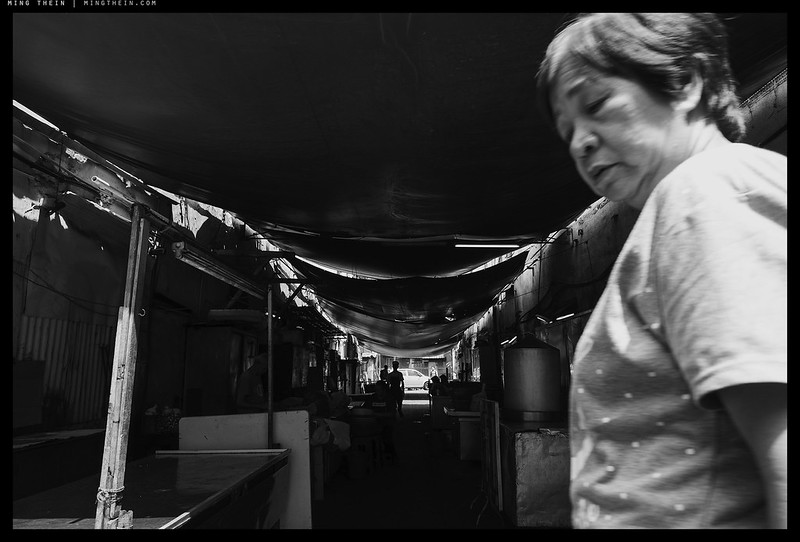
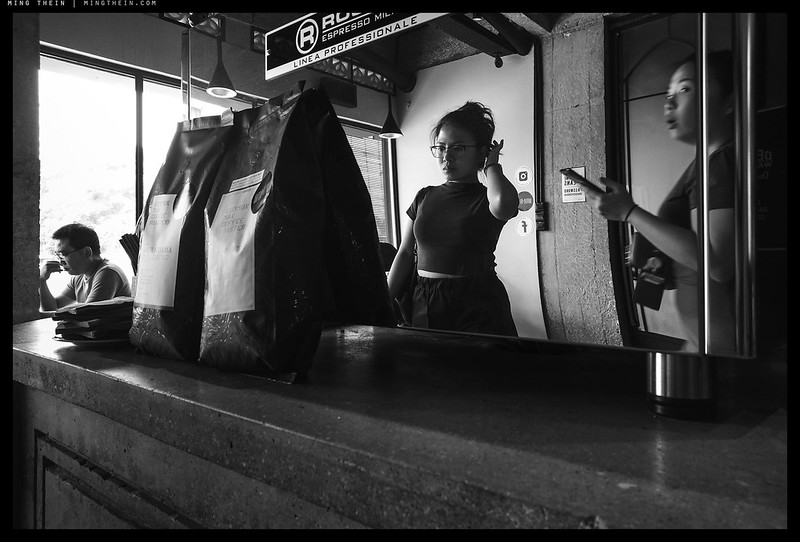

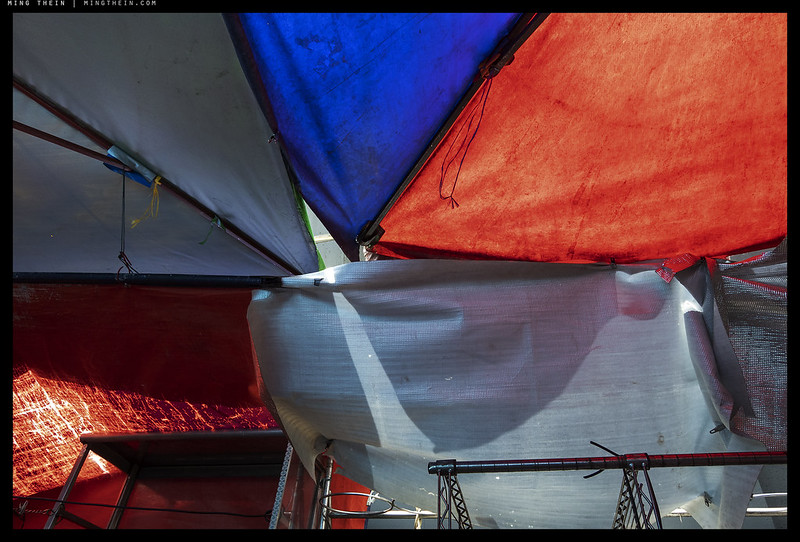

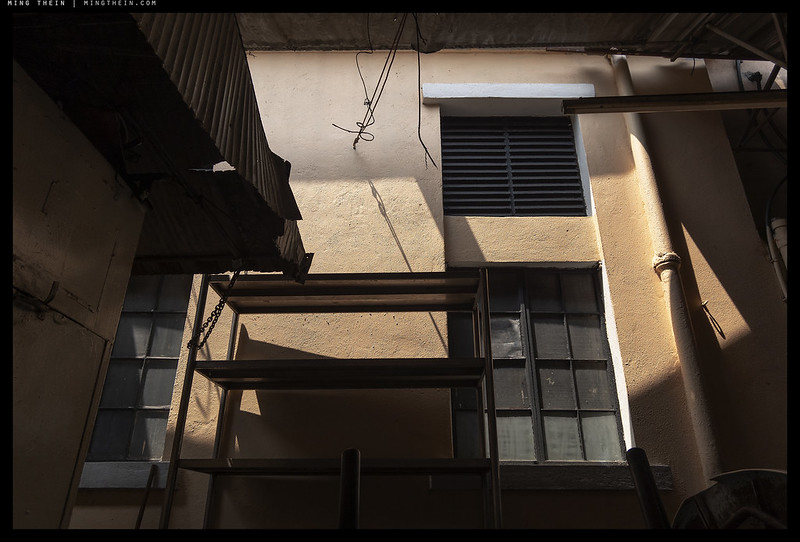


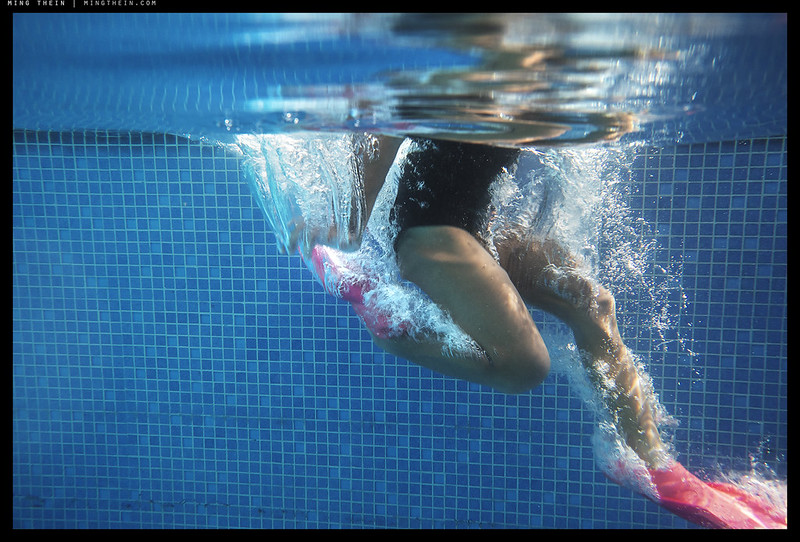
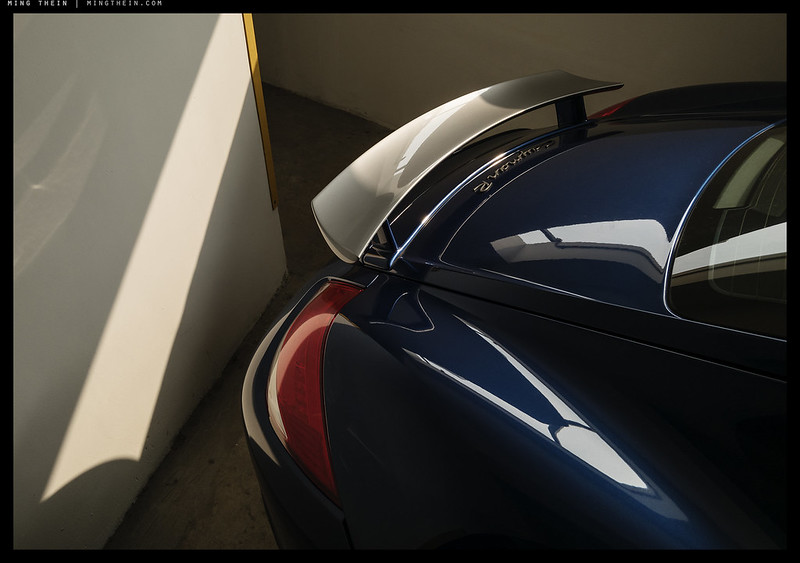
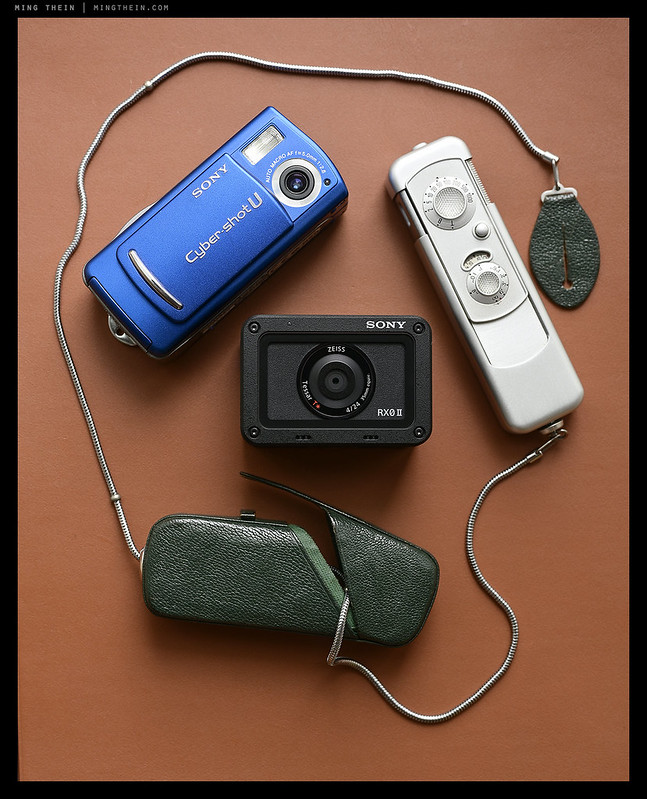





I was going to ask what the big advantages are of this over a Ricoh GR III for you, but I didn’t realize how tiny these things were. So I can definitely understand that. Unfortunate that the battery drains while turned off, because this would be something cool to throw in a pack and take up no room for situations that arise where it could be very useful…. but not so much if the battery is dead….
Another question, though: some of these images seem to be a lot higher contrast than I how I typically seem to think of your images. Mainly the first few photos. Was this just a result of the lighting / a choice in post, or is it something more inherent to the camera itself?
I didn’t expect to say this, but the tilting screen is something surprisingly useful. Not actually sure how you’d hold it without it (and the resultant grip). I’ve taken to topping it off when it’s at 75% or every couple of days; that way I know there’s at least enough charge for a couple of hundred shots.
I can confirm battery drain is about 10%/day, like the A7 series – very disappointing. It’s in airplane mode and everything; I can’t imagine what’s still running in the background that could use that much power. I find the new Nikons drain far more than the old (D3, D700 generation) ones, but even then – we’re talking maybe 5% after two weeks. (And maybe this is normal for self-discharge of lithium batteries in storage).
“Another question, though: some of these images seem to be a lot higher contrast than I how I typically seem to think of your images. Mainly the first few photos. Was this just a result of the lighting / a choice in post, or is it something more inherent to the camera itself?”
Bit of both in this set – contrast was extremely high, and the camera doesn’t have the latitude of a larger sensor. That said, I shot in this style many years ago when sensors left you no choice but to spot meter for the highlights and let the rest fall where it may…
Yeah, I’ve noticed about the same for the new Nikons (and I still have a D700 as well). But they’re not bad for mirrorless cameras, far better than any Sony I ever had. Olympus has always been pretty good for me in this regard as well. I don’t break my E-M5 out every day, and I can pretty much count on the battery not being much different whenever I do use it.
It’s quite impressive that they can even fit a 1″ sensor, decent lens, and a flip screen with controls on it in a camera of this size. I’m honestly shocked it has a removable battery because it’s so tiny. It wasn’t until I saw a pic of someone holding one that I realized your comparison to a DSLR battery was not an exaggeration. The fact that it can do 4K with s-log is really nice to know – I do a lot of video work (though usually with a Blackmagic Pocket 4K or bigger cinema camera), but this could be very handy for a few uses where you want a tiny, robust camera and wide lens.
Battery life – I’ve heard the A7R3 and A7R4 are much better than earlier cameras, but the A7R2 I had would get perhaps 200 shots on a charge at absolute best – which meant six batteries a day and some spares. I’m pretty sure it’s not my shooting style, because with the same usage pattern and switching off between shots, I see ~1,500-1,800 on the Z7 (which is not far off the ~2,500 of my D850, and more than enough for a day of heavy on-assignment use), ~500-600 on the Pen F, and 1,000-2,000 on the old E-M5 (whose battery people complained was dead after a couple of hundred). There’s something Nikon seems to have nailed in power consumption that the other brands are still trying to figure out.
You’ll need a gimbal to make the most of this for video; there’s no stabilisation, which is a shame (also for stills). But the stabilised sample footage I’ve seen looks pretty good.
Same here. I’m getting around that on the Z6. I do have mine set up to use the EVF only (which turns off when your eye isn’t up to it), and the menu/playback defaults to the LCD screen. It’s pretty much exactly like a DSLR this way. And if I need the rear screen for viewing, it’s super easy to change over with the display button on the side of the EVF. And I power off between shots, which isn’t a problem like it was on 1st/2nd gen Sonys because the start-up time is fast (not quite DSLR fast, but fast enough for me).
I think the EVF on the Z cameras is the first time I’ve actually felt like an EVF could be as good as an OVF – it no longer feels like I’m watching a screen (unless light levels drop considerably and it has to gain up). I’m sure other cameras have had very nice EVFs too, but I haven’t used nearly as many as you have, haha 🙂
Hard to believe the photos in this post came from such a tiny camera. Hopefully this technology will make its way to the backup cameras in our vehicles. Sony founders Masaru Ibuka and Akio Morita would be thrilled with the RXo, for them it was always about ultra-high quality in a small package…imagine how proud they would be to behold the new A7RIV and to know that Tsushin Kogyo KK AKA Sony will soon be the number one camera company in the world already dominating in the FF MILC category. Love’em or hate’em it’s a great success story…;)
In all fairness, we are looking at web size, so there are limitations. But yes, IQ is better than expected.
They might be proud of the feature list per cubic centimetre, but as a usage experience…all of the Sony cameras, RX0 included, require some serious help.
You keep saying that but in my experience, the Alpha UI has been excellent and a joy to use. I guess it boils down to what you’re used to and since I started with the original A7 and have very little experience with any other UI, its quite familiar. The incremental improvements that Sony has made to the Alphas UI over several generations have made them even more simple to use and extremely easy to customize the camera well beyond my expectations. I agree that camera companies do need some “serious help” deploying an efficient way to help customers migrate from one UI to another when they change systems.
I’ve had numerous Sony FF mirrorless cameras (and APS-C mirrorless) and they have just never been fun to use. They’ve improved A LOT from the original a7 but the entire UI is still a mess and button placement/choices don’t help at all.
They have great tech, but it wasn’t until I got a Nikon Z6 that I felt like there was actually a mature FF mirrorless camera out there. Nikon nailed almost everything with their haptics, UI, build quality, etc. It feels exactly like what you’d expect transitioning from a DSLR to a mirrorless camera.
The Nikon Z feels like a camera you want to use… the Sony’s always felt like a camera you had to use because there was no other option (for a mirrorless FF) but you didn’t really enjoy doing so. I always ended up selling mine and going back to DSLR.
Same. I owned the original A7, A7R, and A7R2; none of them stuck for various reasons. I’ve used an A7R3 and gave it back rather quickly. In all of those situations, the D810 or D800E was what I reached for when I had to get a job done. My Z7 has more mileage on it than the D850 now, and it’s supplanted the DSLR for the go-to camera.
“…and have very little experience with any other UI”
This encapsulates it in a nutshell: the problem is 1. the settings are not logically grouped (or they are logical from a programming or engineering standpoint, not a photographer’s), and you are left hunting through 30+ pages of menus(!); 2. there are lockouts that are not explained, i.e. some settings cannot be combined or are mutually dependent on others being enabled; 3. the menu itself isn’t nested in a quick to scroll way – you have to move left/right and up/down as opposed to just up or down with other menus – this makes 1. even slower.
Maybe I’ll give the Z7 a try. It’s only been out for a year and already down in price by $400, to $2996 at BH. Perhaps by Christmas it will have dropped to 2500. 😉
If it were a Sony, it would have dropped $1,000 over the year 😉
The Z7 is an amazing camera, though (and the Z6, identical aside from the sensor). There’s also an E-mount to Z adapter (Techart) you can buy for ~$250 that apparently works very very well. Best of both worlds if you have E-mount glass already 🙂
The adaptor works (I’ve got one), but it’s very sensitive to which glass you put on the front as far as focusing speed and ‘positivity’ goes. So I’d say it’s the best of both worlds, with caveats and without free lunches.
That’s great to hear! I’m not someone who needs super fast focusing speed in most situations (and if I do, I wouldn’t expect adapted Sony glass to do the job).
Could be a great option for picking up some used lenses to fill some of the gaps of the system for now. And for Loxia lenses, the speed won’t matter. Though I’m hoping for some native Z mount Loxia-type lenses.
Frankly, I think it’s awesome that the adapter even exists (and you can update it with the cap!). I thought for sure there wouldn’t be enough room to fit the necessary electronics.
I’m using it with the 21 Loxia, at least until Nikon releases the 20/1.8 S. The chip only has to do simple instruction translations, so the physical size/power required isn’t that high. But yes, it’s an impressive piece of engineering…
That’s one lens I’m thinking of getting but I’ll probably just wait until the 20/1.8S is released to see if it’s as good, or close enough anyway.
I still have my Tamron SP 85/1.8 VC for Nikon mount and I may just keep that instead of getting the 85 S. It’s a phenomenally sharp and well-corrected lens (even better than the Nikkor 85/1.8G) and I can still use it with my DSLRs of course. I don’t know, I’ll cross that bridge a bit later. That lens + the C/Y 85/2.8 for when I need a compact 85 should be good enough.
I’m picking up the 50 1.8 S soon. So far have just been using adapted Nikon lenses and the 24-70/4 S.
Unrelated: have you heard of the new Laowa circular fisheye 4mm 2.8 for M4/3? It’s $200. I think I’m going to pick one up just because it’s so cheap. I used to one of the famed Nikkor 8mm 2.8 AI-S lenses (picked it up for about $300!!), but that thing was a beast and worth too much money to justify keeping it. I did have a lot of fun shooting with it, though.
If the lenses released so far are anything to go by, it’ll probably make full use of the big exit pupil and short flange and be a cracker – in any case, much better for documentary work with 1 1/3 stops extra and AF.
The 50/1.8S is one of the best 50s I’ve ever used; I’d put it pretty darn close to the Otus 55.
Can’t say I’ve had much interest in fisheyes – they’re a bit of a one trick pony and not that useful…
Yes, that’s what I’m hoping – and ah, you’re right… I was thinking the 21 Loxia was an f2. So, yeah, 20/1.8 S would definitely be the way to go.
I don’t care for fisheyes at all either – especially diagonal fisheyes. But circular fisheyes are pretty fun to use (and actually have some nice use on film sets). Normally I wouldn’t even consider it, but for $200…
Looking forward to getting my 50/1.8S!
That’s very interesting. That might make a Nikon Z with Loxias very attractive for mountain walking / landscapes. The Nikons beat the Sonys on weather sealing, build, and viewfinder among other things, but lose on the huge primes with no apparent prospect of anything more compact.
Yep – and it solves the problems with the only other compact option – M mount – and it’s issues with regular microlens arrays and wide lenses…
Wishful thinking…if it were Sony, there’d be a new model and the old one would be half the price! The D850 has now been out two years and it’s still 85% of original list. 😉
Yeah but I already have a Sony and $400 – $800 discount on the Z7 isn’t anything to sneeze at especially moving to a new system (should I choose to do so) which can get quite expensive. I did get to handle one at my local best buy yesterday, the AF seems to hunt quite a bit in indoor light. And I totally forgot about the single card slot. I have had bad luck with card failures so that could be a problem. Why on earth would nikon leave out that second card slot. Who exactly was the target audience? Btw, this bromance over the Z’s has been quite entertaining, you two should get a room LOL! 😉
Discounts: true; something is always better than nothing.
Second card slot: Funnily enough, the only two times I’ve had card errors that have required a second card were in a Sony and a Leica. Go figure…
I like gear that works and does the job creatively. Interesting how nobody seems to care or pick up on my even greater love for the D3500, but oh well, it just ain’t hip, sexy or insta-worthy…
D3500: I picked up on it and I appreciate it. With many budding photographers in my clan, it is on my short list for their first camera. As for your experience with card slots, I’m happy for you but that has absolutely nothing to do with my experiences so not helpful.
I have to laugh, I have the opposite reaction to the menus. I’ve always found the Nikon menu to be the most convoluted of all of them, Canon being the friendliest. I shoot many brands, but mostly Sony now because it most suits the work I do. And I’ve found that the menu system is easily accessed once you take the time to understand how it’s organized, which is true of all the brands. Frankly, I think the reason I don’t like the Nikon menus is because they look overtly technical, making me wade though stuff I don’t ever expect to adjust, just to find the little gem I’d like to adjust. My attention span is too short to be so inclined. 🙂
In a way, it’s like grocery shopping. Sometimes they don’t put “like” things together. I can never find a can of Dinty Moore Beef Stew. My brain tells me it should be by the soup, but that isn’t where they put it, so I assume that Dinty doesn’t want it’s stew classified as soup. Same for plain cocoa. Baking section, or by coffee? It’s all about organization, and what a product or function is intended to be associated with.
Depends whether you’re a left-right-scroll person or an up-down scroll person, I suppose. Sony wasn’t in existence until not so long ago, but Canikon menus have been the same for literally the last 20 years. At least their settings are sensibly grouped and don’t have lockouts/conflicts like Sony! I’m not talking about soup being sold as stew, but more fundamental stuff like folder settings being on different tabs. There’s no reason or excuse for this.
Thankfully at least you can make a custom menu on all of the cameras these days…
I agree; the custom menu buttons make the ongoing menu debate nearly moot for anything other than espousing brand loyalty especially with the addition of Sony’s My Menu customization feature. I can’t remember the last time I had to go diving 😉
Only when you want to try and configure the thing to do something outside the normal, or the first time you setup…
I’ve shot with Nikon (D60,300,800), Sony (RX100, A7RII, A7III), Ricoh (GR), and Fuji (X100F, XF10) and the Fuji has been my least favorite in terms of the menu system. They’re all fairly convoluted (except Ricoh imo) but once you learn them it’s kind of a moot point. When I went from Nikon to Sony it was a pain but now setting up a Sony camera is second nature and I really appreciate how much you can customize things.
As a stills shooter, buy a mint used x100f for $750. It’s twice the camera with a bit larger footprint.
I looked into one some time ago. It’s more than twice the size/volume/footprint, and it doesn’t give twice as good results, sorry. And there’s the whole 35mm FOV issue (for me, at least). I am aware there’s a 28mm converter, but at this point I might as well carry the Z7.
I’ve been curious about this camera for video especially when I found out Moondog Labs makes an anamorphic adapter for it.
The most direct comparison for me would be against the iPhone, but I’m not sure how much better it would be than the iPhone in broad daylight (to make it worth the premium). It’s probably easier to balance on a gimbal fully kitted out: the iPhone has a weird form factor and distribution of mass, which gets weirder when you start attaching lenses to it, and that can throw off the small gimbals that are made for phones. The tilting screen would make it easier to use in some shooting scenarios too. The iPhone adds a very useful longer lens compared to this single-lens camera though.
I’m guessing a popular use for it is for mounting on the outside of fast moving vehicles.
Also it sounds like you gave in and got Nikon’s 28/1.4E? 🙂
It turns out there’s also a whole conversion kit to C or M4/3 mounts – that opens things up quite a bit, and might make for an interesting mini-cinematic rig when I get bored of using it as run and gun. One of the better 25/1.4 C mount lenses would turn this into a ~70/1.4-e in a body the size of a DSLR’s 50/1.8 alone…
I think it’d balance quite well on a gimbal given overall uniformity of density and size.
Nope, no 28/1.4E here…too big and unbalanced on the Z7. I’m waiting for the 20/1.8 S.
Yes, now I remember seeing that conversion too. I have to wonder at some point when it might be easier to use an actual ILC or slightly bigger sensor when you start attaching all these things to the camera. Same problem applies to the iPhone and its accessories too.
Even the smallest of the ILCs – a GM1 or GM5 – would be significantly larger once rigged. I think there’s something here, but yes, as you point out – the returns are rapidly diminishing…
What are the advantages of a GR II or even a GR III over this camera?
Slightly better low light capability; ergonomics and handling…lens is a bit better resolution-wise and faster. It might fit in some pockets better because of the shape…?
Maybe something to keep an eye out for when the v3 comes out and the price drops – that seems to be best time to purchase Sony products…
Shame about the battery drain when turned off, this would be a nice camera to keep in my hiking bag for the occasional scenic wide angle, without needing to worry about bad weather, drops, etc. It would also be nice to have a second camera if I’m using a longer lens (85, 70-200). But I know that it would be the kind of thing I would forget about until I took it out, at which point the battery would be flat…
You could take the battery out between uses, but then you’d probably lose your clock settings etc. I guess they needed to leave something to fix for v3…
That’s some seriously impressive IQ coming from that camera. Truly amazing.
So long as there’s light, yes. In twilight you need to start looking for strong highlights and your spot meter setting…
Interesting, and you’ve used the gizmo to make some nice photos. But the gist is it’s basically a suped-up GoPro?
At that price, as a stills shooter, I think I’d just get the latest Ricoh GR and be done. In fact, I would own the latest Ricoh GR if it wasn’t £800!
Comments about the shutter button ring true. Why can’t everyone just do it like Nikon? I actually sold my X-E3 because the shutter release was so lousy – I thought it had some weird software glitch or bug causing hideous shutter lag! The X-T3 is better but still not marvellous, and I always found the button on my GR somewhat ‘uncertain’, requiring far more fiddling and pressing than was a good idea. My Nikons’ shutter buttons are high perfection.
Anyway, I won’t be buying one of these Sonys but you’ve reminded me how much I miss my GR!
Yes and no. A GoPro doesn’t come close in IQ or shooting functionality, plus the tilting screen is genuinely very useful with a camera of this size. I don’t see a GoPro delivering better results than a phone under any conditions; the Sony will, all the time. At least where I live, the RX0II is 60% the price of the GR. And it’s all-weather to the point of being submersible, focuses faster and has much longer battery life…